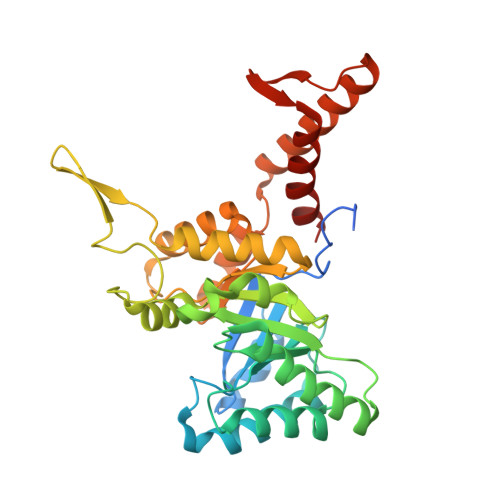The crystal structures of the tri-functional Chloroflexus aurantiacus and bi-functional Rhodobacter sphaeroides malyl-CoA lyases and comparison with CitE-like superfamily enzymes and malate synthases.
Zarzycki, J., Kerfeld, C.A.(2013) BMC Struct Biol 13: 28-28
- PubMed: 24206647
- DOI: https://doi.org/10.1186/1472-6807-13-28
- Primary Citation of Related Structures:
4L7Z, 4L80, 4L9Y, 4L9Z - PubMed Abstract:
Malyl-CoA lyase (MCL) is a promiscuous carbon-carbon bond lyase that catalyzes the reversible cleavage of structurally related Coenzyme A (CoA) thioesters. This enzyme plays a crucial, multifunctional role in the 3-hydroxypropionate bi-cycle for autotrophic CO2 fixation in Chloroflexus aurantiacus. A second, phylogenetically distinct MCL from Rhodobacter sphaeroides is involved in the ethylmalonyl-CoA pathway for acetate assimilation. Both MCLs belong to the large superfamily of CitE-like enzymes, which includes the name-giving β-subunit of citrate lyase (CitE), malyl-CoA thioesterases and other enzymes of unknown physiological function. The CitE-like enzyme superfamily also bears sequence and structural resemblance to the malate synthases. All of these different enzymes share highly conserved catalytic residues, although they catalyze distinctly different reactions: C-C bond formation and cleavage, thioester hydrolysis, or both (the malate synthases).
Organizational Affiliation:
Department of Biochemistry and Molecular Biology, Plant Research Laboratories, Michigan State University, Plant Biology Building, 612 Wilson Road, East Lansing, MI 48824, USA. ckerfeld@lbl.gov.


















